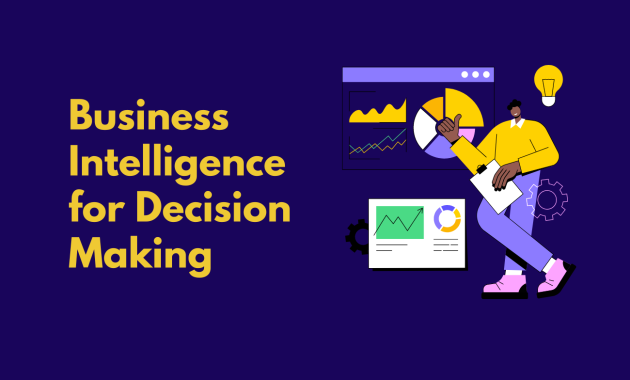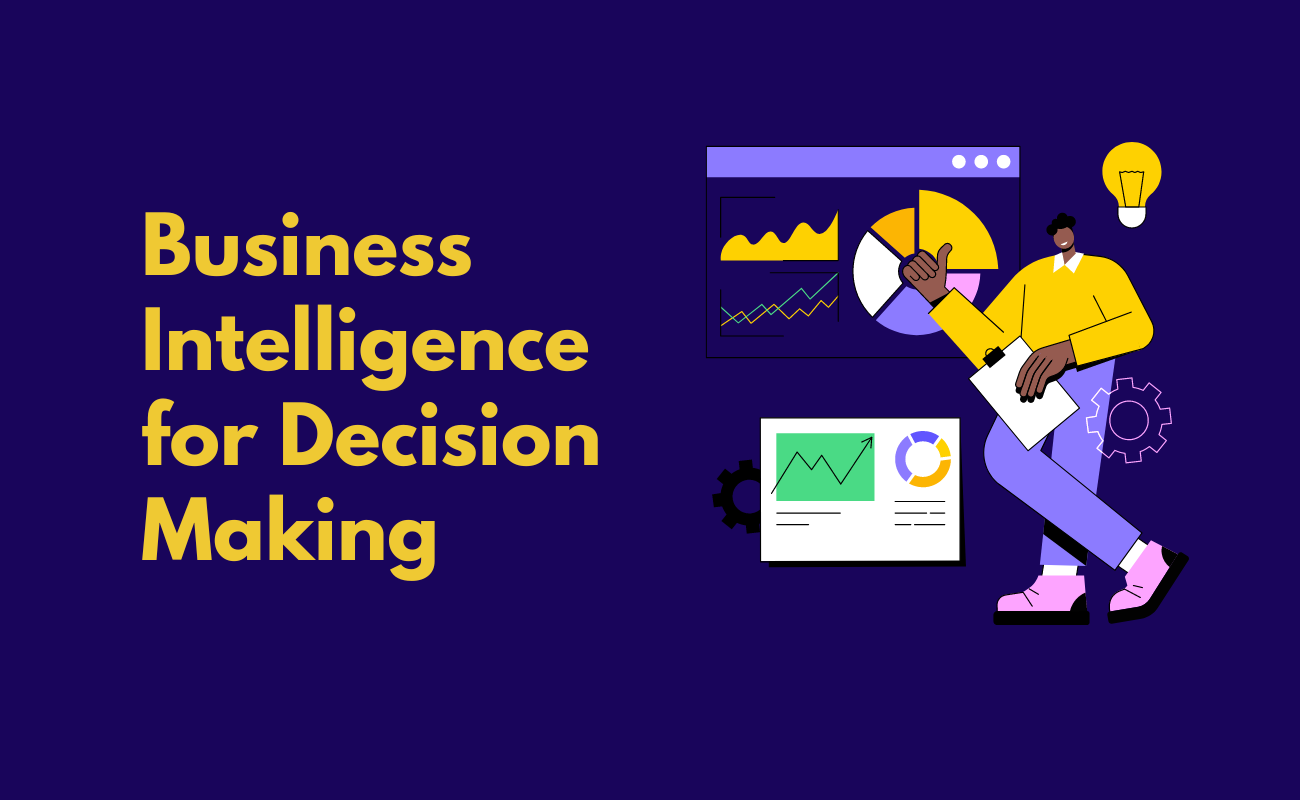
How to Make Smart Decisions with Business Intelligence Software: A Guide for Modern Businesses
In today’s data-driven world, businesses are drowning in information. The challenge isn’t the lack of data, but the ability to extract meaningful insights from it. This is where Business Intelligence (BI) software comes into play. This guide explores how to make smart decisions with business intelligence software, transforming raw data into actionable strategies.
For decades, companies have struggled with data overload. Spreadsheets and manual reports were the norm. These methods were time-consuming and prone to errors. They often provided a limited view of the business. Business intelligence software offers a solution. It automates data collection, analysis, and reporting. This allows businesses to make informed decisions faster and more efficiently. This guide dives deep into the core of using this software effectively.
Understanding the Power of Business Intelligence
Business intelligence software empowers businesses to understand their performance. It provides a comprehensive view of key performance indicators (KPIs). This allows for identifying trends, opportunities, and potential risks. BI tools consolidate data from various sources. These sources can include sales, marketing, finance, and operations. The software then presents this data in an easy-to-understand format, such as dashboards and reports. This enables users to quickly grasp complex information. They can then act on it with confidence.
The benefits of business intelligence software are numerous. They include improved decision-making, increased efficiency, and enhanced profitability. By leveraging data, businesses can optimize their operations. They can also tailor their products and services to meet customer needs. The result is a more agile and competitive organization. This is important for any business aiming to survive in the long run.
Key Features to Look for in BI Software
Choosing the right business intelligence software is crucial. Several key features will impact its effectiveness. Consider these factors when selecting a BI solution:
- Data Integration: The ability to connect to various data sources. This includes databases, spreadsheets, and cloud services.
- Data Visualization: Robust tools for creating dashboards, charts, and graphs. This helps in understanding complex data quickly.
- Reporting and Analysis: Features for generating custom reports and performing advanced data analysis.
- User Interface: A user-friendly interface that is easy to navigate and understand. This is vital for adoption across all levels of the organization.
- Scalability: The capacity to handle increasing amounts of data as the business grows.
- Security: Measures to protect sensitive data from unauthorized access.
- Mobile Accessibility: The ability to access reports and dashboards on mobile devices.
These features will help you make smart decisions. They will also help you gain a competitive advantage. The right tools can transform your business operations.
Implementing Business Intelligence: A Step-by-Step Approach
Successfully implementing business intelligence software requires a structured approach. Follow these steps to maximize your chances of success:
- Define Your Objectives: Clearly identify the business goals you want to achieve. Determine the key questions you want to answer using data.
- Choose the Right Software: Research and select the BI software that best meets your needs. Consider the features, scalability, and cost.
- Gather and Prepare Data: Collect data from relevant sources. Clean and transform the data to ensure accuracy and consistency.
- Build Dashboards and Reports: Design dashboards and reports that provide actionable insights. Focus on the key metrics.
- Train Your Team: Provide training to your employees on how to use the BI software. Ensure they understand how to interpret the data.
- Monitor and Refine: Continuously monitor the performance of your BI system. Make adjustments as needed to improve its effectiveness.
This structured approach will help you make smart decisions. It will allow you to get the most out of your business intelligence software.
Real-World Examples of Business Intelligence in Action
Business intelligence software is transforming businesses across various industries. Here are some examples of how it is used:
- Retail: Retailers use BI to analyze sales data. They identify trends and optimize inventory management. They can personalize customer experiences.
- Healthcare: Healthcare providers use BI to improve patient care. They analyze patient data to identify areas for improvement. They can also optimize resource allocation.
- Finance: Financial institutions use BI to detect fraud. They also assess risks and improve investment strategies. They can also improve overall customer service.
- Manufacturing: Manufacturers use BI to optimize production processes. They also reduce costs and improve product quality. This is key to remaining competitive.
- Marketing: Marketers use BI to analyze campaign performance. They also optimize marketing spend. They can also improve customer engagement.
These examples demonstrate the versatility of business intelligence software. It can be applied to solve business challenges across different sectors.
Overcoming Challenges in Business Intelligence Implementation
Implementing business intelligence software can present challenges. Be prepared to address these issues:
- Data Quality: Inaccurate or incomplete data can lead to flawed insights. Implement data quality checks and cleansing processes.
- User Adoption: Resistance to change can hinder the adoption of new software. Provide training and support to encourage user engagement.
- Technical Expertise: Lack of technical expertise can impede the implementation process. Consider hiring consultants or training your staff.
- Integration Issues: Integrating data from multiple sources can be complex. Choose software with robust integration capabilities.
- Cost Considerations: The cost of business intelligence software can be a barrier. Evaluate different options and choose a solution that fits your budget.
By addressing these challenges, you can increase the likelihood of a successful implementation.
The Future of Business Intelligence
The future of business intelligence software is promising. Advances in technology are driving innovation. This includes:
- Artificial Intelligence (AI): AI is being integrated into BI tools. This allows for automated insights and predictive analytics.
- Machine Learning (ML): ML algorithms are helping businesses identify patterns. They can also make predictions based on large datasets.
- Cloud Computing: Cloud-based BI solutions are becoming more popular. They offer scalability and cost-effectiveness.
- Big Data: Businesses are generating more data than ever before. BI software is evolving to handle this massive influx of information.
- Self-Service BI: Tools are becoming more user-friendly. This empowers business users to analyze data without relying on IT departments.
These trends will continue to shape the evolution of business intelligence software. Businesses must stay informed to remain competitive. They must also adapt to these changes.
Making Smart Decisions Today and Tomorrow
Business intelligence software is an essential tool for modern businesses. It provides the insights needed to make informed decisions. This guide has provided a comprehensive overview of the software. It included its benefits, features, and implementation strategies. By following these steps, you can make smart decisions. You can also leverage data to achieve your business goals. Embrace the power of BI and unlock your business’s full potential.
As a business, you should always be striving to be more efficient. This can be achieved through data analysis and smart decision making. The right business intelligence software can help you do just that. It can empower you to make the right decisions for your business. This will help you to remain competitive in the long run.
With the right tools and strategies, you can transform your business. You can also create a data-driven culture. This will lead to better decision-making. This in turn will lead to greater success.
[See also: Related Article Titles]

